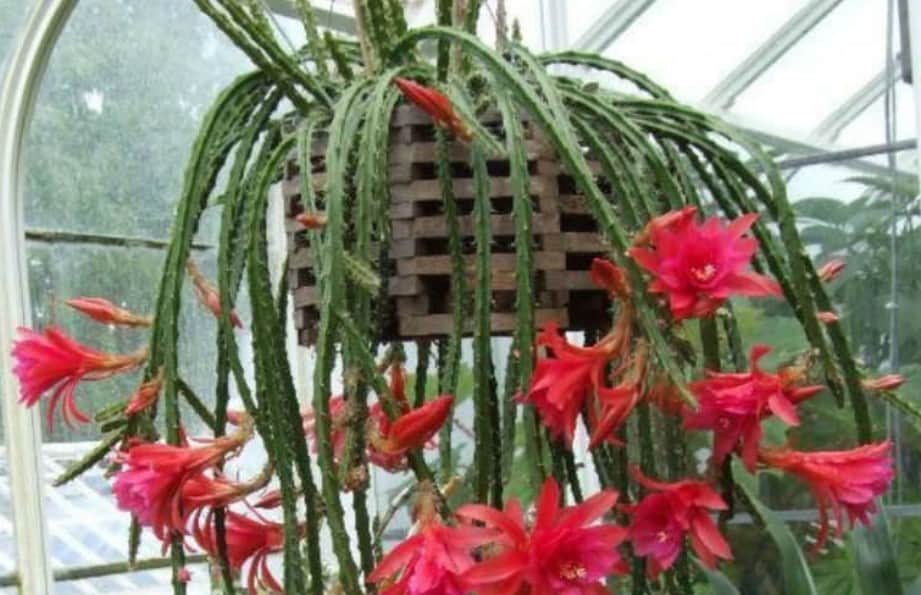With their natural draping nature, trailing succulents can make the best plants for hanging baskets. While they are sprawlers in nature, growing over rocks and plants, and in every direction trying to out-compete everything, they can be controlled when grown in hanging baskets and pots. One is spoiled for choice when it comes to these plants as they are just so many beautiful varieties, and you can choose to grow them by themselves or together with other plants. Here are some amazing options to consider for your home.
Aporophyllum ‘Edna Bellamy’
Aporophyllum ‘Edna Bellamy’ is a hybrid of Aporocactus and Epiphyllum. It’s an easy to grow cactus with rope-like stems, with tiny spines. Its flowers can be up to 2 inches in diameter, very profuse, with red and peach tones. For good growth and flowering, these cacti should be grown in rich, well-draining soil. They should be watered regularly and also fertilized. They don’t like extreme heat and cold and prefer shade to sun.
Aloiampelos Ciliaris (Climbing Aloe)
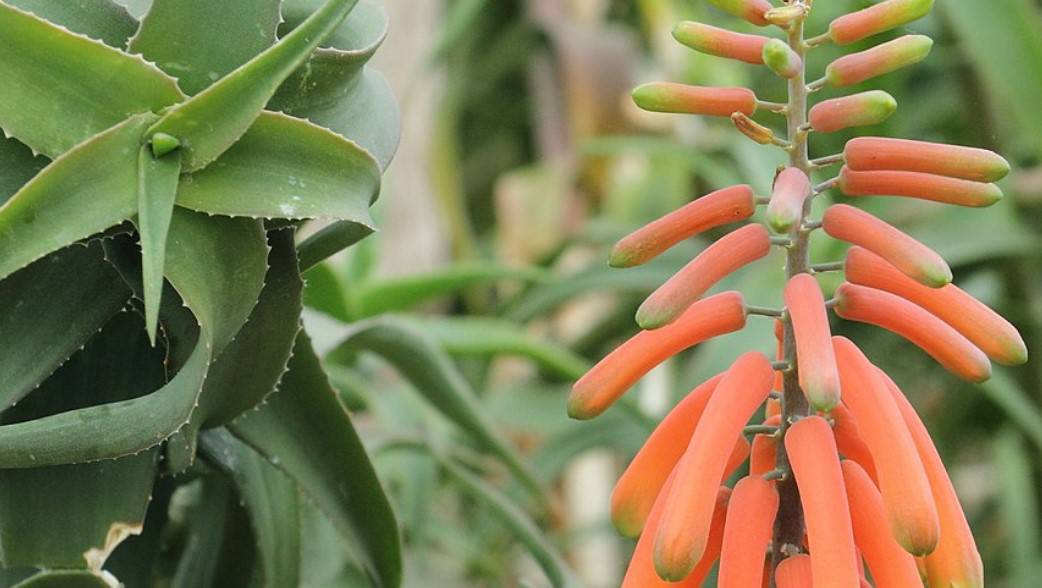
Climbing aloes also make an excellent choice for trailing plants. The plants grow very quickly, producing long, thin stems that shoot upwards, producing large bright orange-red flowers. The leaf sheaths are conspicuously striped green and white. These plants like sunny positions, and need excellent drainage in pots.
Kleinia Petraea (Trailing Jade)

With their ovate shaped leaves that overlap like shingles along the thick succulent stems and blush a beautiful purple color in winter, trailing jade look very elegant on hanging baskets. Their stems can drape downwards up to 4 feet when planted in a container. They produce bright orange, rayless flowers which usually appear in winter or fall. The plant doesn’t require lots of maintenance and is very drought tolerant once established. They do need some water, during the summer, but don’t leave the soil wet for prolonged periods.
Crassula Perforata (String of Buttons)

This small shrubby succulent looks amazing sprawling over the hanging basket. The triangle-shaped leaves grow opposite each other and spiral around the stem, giving it a stacked appearance. If grown where there is enough sunlight, its leaves develop reddish-pink color on the edges. It is fast-growing succulent that prefers well-draining soil and less watering. It does well in full to partial sun. If you are planting indoors, place it in a room that gets a lot of sunlight.
Othonna Capensis (Ruby Necklace)
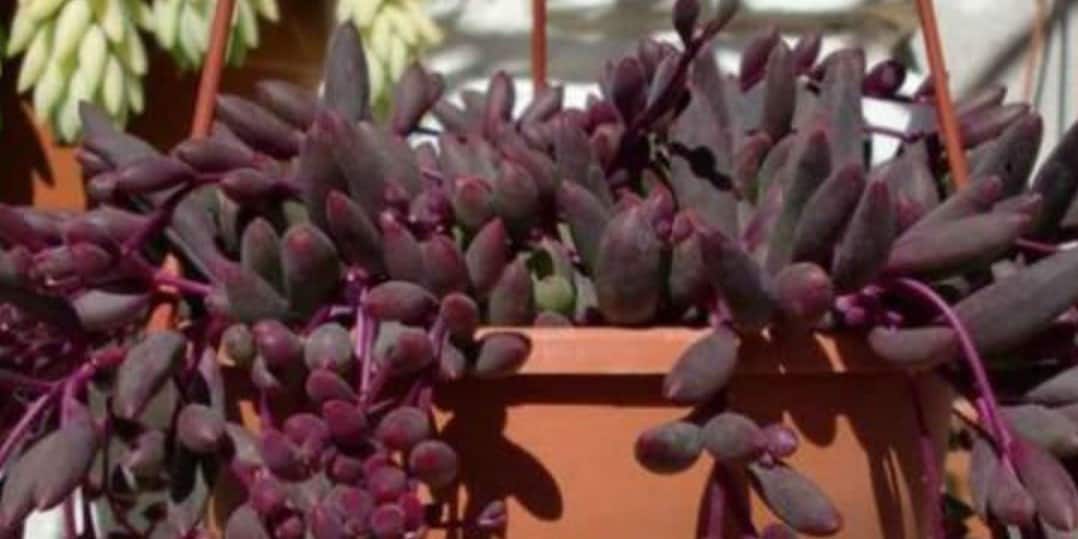
This plant produces yellow flowers that look like daisies and looks wonderful with the purple backdrop. It’s one of the rarest succulent plants in the world. Its flowers can appear all year round, giving it that amazing look all the time. Its leaves are long, narrow, and bean-like and grow on the purple trailing stem. Most Othonna species do much better when exposed to direct and hot sun rays. If grown indoors, make sure there is they have enough light and space.
Ceropegia linearis (Variegated Chain of Hearts)
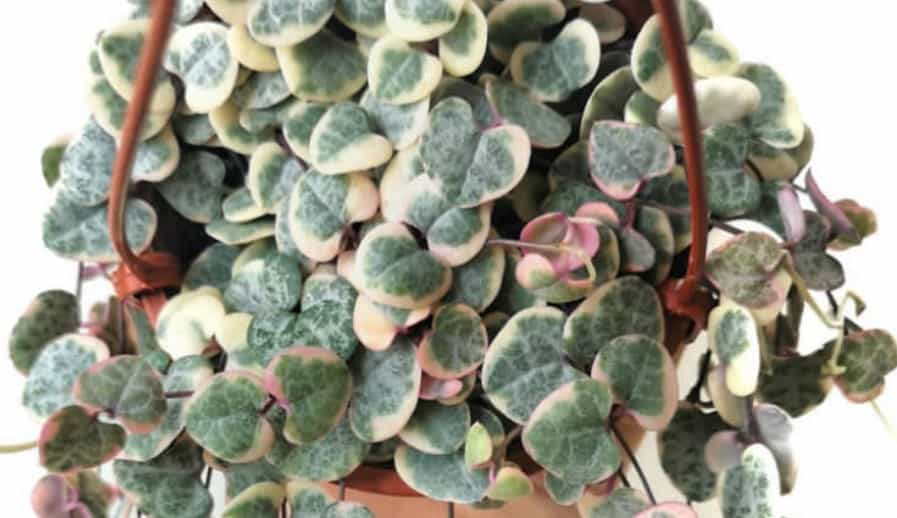
True to its name, the plant has leaves with the shape of the heart and comes in a beautiful shade of blue-green, purple, and silver. Its stems are long and dangling. A string of Hearts plant likes heat and bright light but they don’t tolerate direct sunlight. If the leaves of the plant are wider apart and appear lighter in color with less marbling, it’s usually an indication the plant needs more light.
Sedum morganianum ( Donkey’s Tail)
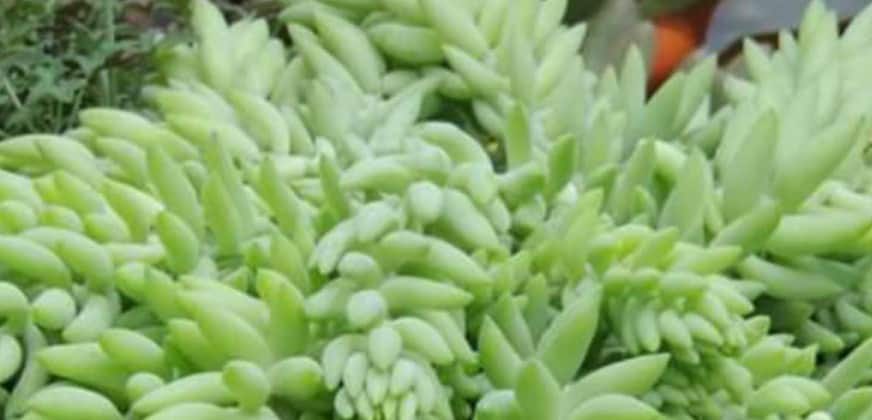
The trailing foliage of this plant grows about 2-3 feet long. The thick stems appear woven or plaited with leaves. It is a pale blue-green in color and can have a soft chalky texture. It produces beautiful red and pink flowers that appear during summer. When planting Burro’s tail in your hanging basket, make sure you place it where it gets full sun. Do not overwater, as this can cause root rot.
Dischidia nummularia (String of Nickels)

Its leaves are round and flat, looking like coins hanging on a string. The leaves range in color from a very light olive green to a shade of bronze. The flowers are white or pale yellow and are very small. When planted in a hanging basket, the stems dangle down fabulously. Strings of Nickels prefer a half a day of filtered sun. Direct sunlight can be tolerated for short periods of not more than 2 hours. They like to be kept consistently moist, but never soggy.
Curio radicans (Strings of Bananas)

It is an extremely hardy plant, which originates from South Africa. It has small banana-shaped leaves that grow from its long trailing stems. It produces small white to yellow flowers with a cinnamon scent, which normally appears during fall and winter. It is drought tolerant. Water when the soil feels dry to the tough, but don’t let it remain bone dry. Avoid intense afternoon sunlight during the summer months.
Check this too: How Often Should You Water Succulents?
Ceropegia haygarthii (Lantern Flower)
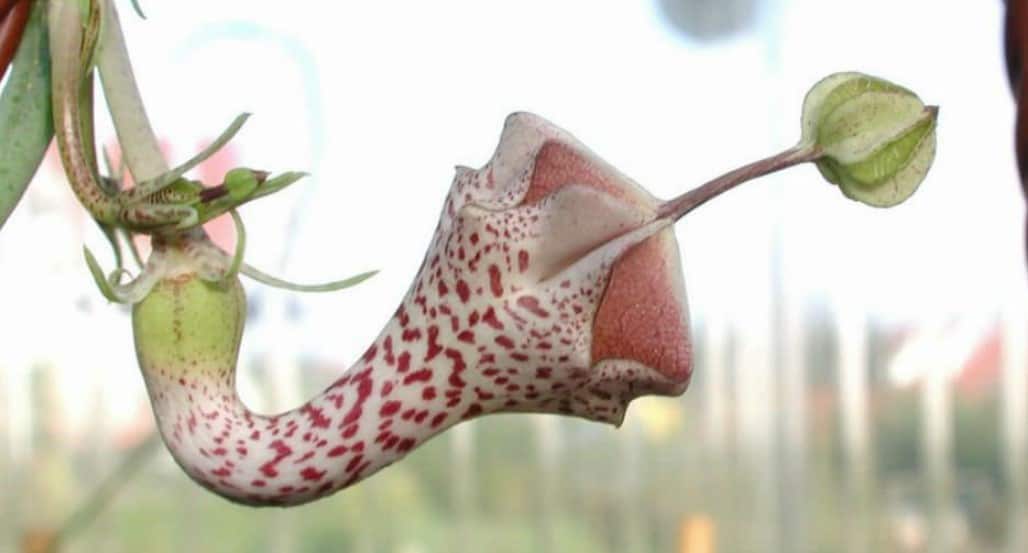
Ceropegia haygarthii is a semi-evergreen, strong growing, twining, stem succulent with small ovate leaves. The stems are climbing or trailing, fleshy, green, and covered with a glaucous bloom. The flowers can grow up to 1.6 inches long and 1 inch wide. The tube is creamy and flecked with purple-maroon, has a swollen base, curved upwards, and expands like a funnel. These plants like water and a bit of fertilizer during warm weather.
Check this too: How to Care for Christmas Cactus

